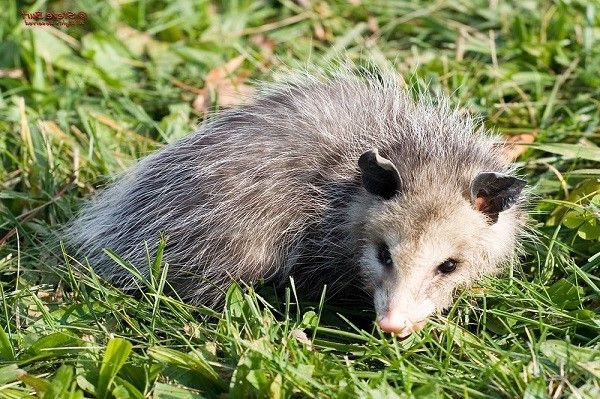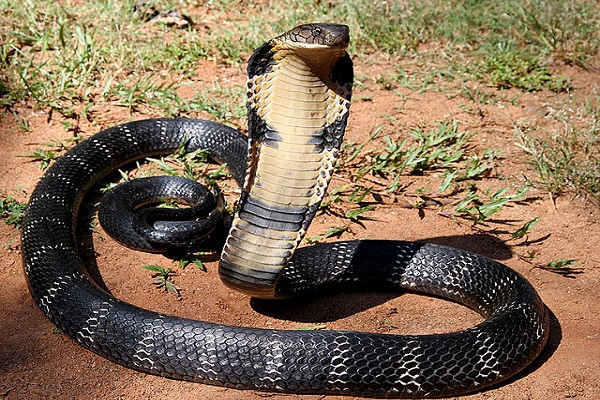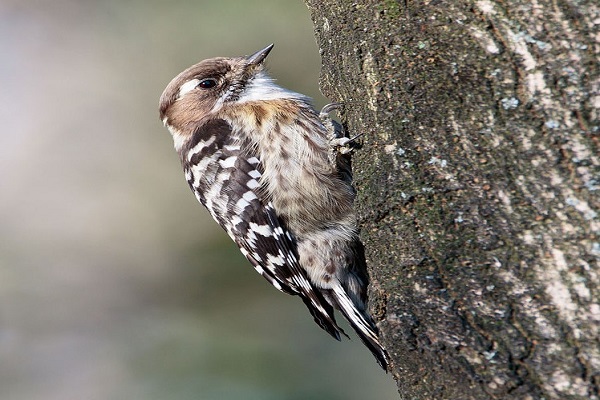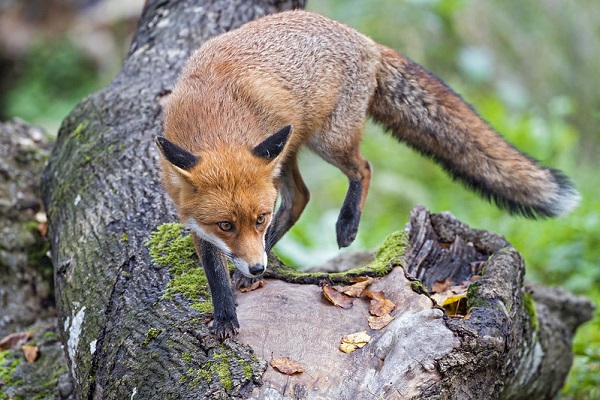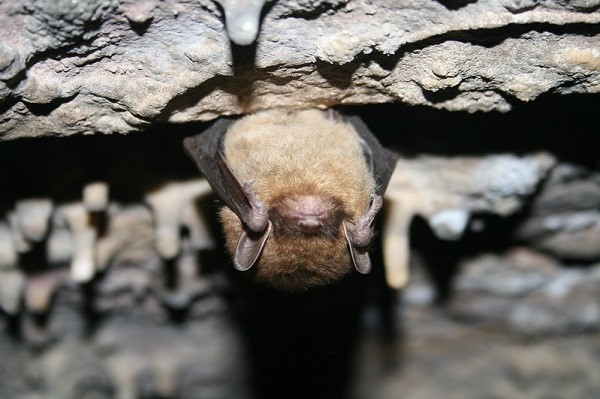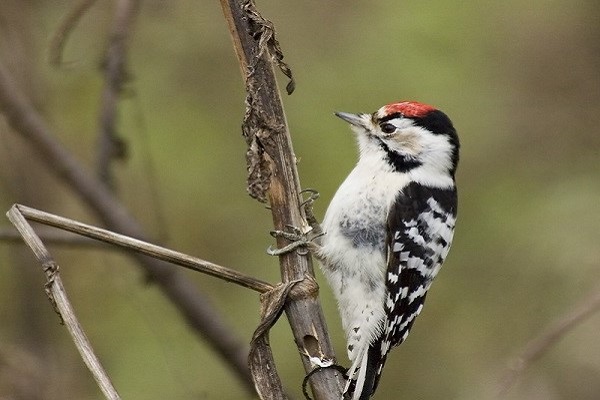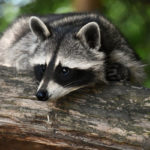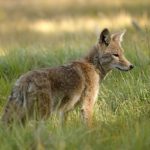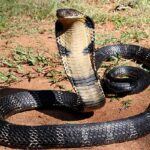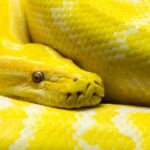
- Brian Moss (President)
- AAAC Wildlife Removal
11/28/2022 Total words : 1582
What Are Opossums’ Predators?
For small mammals like the opossums, it can be very challenging to thrive in the environment, especially with the presence of bigger animals in the wild. They always become targeted as prey because they are easy to hunt and kill. In order to survive, these creatures have learned to adapt in different ways. This includes their defense mechanism to "play dead," where they feign death to protect themselves. However, opossums are not always successful con artists. Fast, powerful, and ferocious animals in the wild can capture them before they even take action. Let's identify these predators! What Eats Opossums: Animals That Prey On Opossums The ecosystem cannot be in balance without turning its organisms into predators and preys. So even with the opossum's "playing dead" skill, they cannot avoid being hunted and killed by other wildlife. The natural predators that eat possums include the following: Red Foxes The red fox is one of the most popular opossum predators. They are cunning and quick, which makes it difficult for the opossums to escape. When they see a good opportunity, these animals will immediately pounce on their prey. Red Foxes are the largest of the true foxes. They have long cone-like snouts and red fur across their face and all over their body except their stomach which is white. They love to lurk around open areas of woodlands, wetlands, brushy fields, and both rural and suburban neighborhoods. The opossum, raccoon, rodent, and hare are included in foxes' favorite food. They mostly hunt alone or in pairs at night, no wonder how the nocturnal opossums turn into poor little prey. Hawks Hawks are also one of the animals that consume opossums. These birds of prey have a sharp sense of sight and can spot their target from far away. Once they aimed their target, they quickly dive usually from a concealed perch and grab their victim with their sharp talons. They usually go after young and small animals, which makes young opossums an easy meal for them. These creatures are birds of prey or raptors from the Accipitridae family. Like many other birds, they are tetrachromats, meaning they have four types of cone cells in their eyes that enable them to see a wider range of colors than most animals. This gives them the amazing ability to see small animals from very far away. There are different species of hawks and they exist on many continents. The most common ones that hunt opossums are Cooper's hawk, red-tailed hawk, and broad-winged hawk. Owls Opossums become no match for these predators as they can be easily killed and eaten. Like hawks, owls are tagged as ruthless birds of prey that feast on small mammals. They have a great sense of hearing, which allows them to locate their prey even in complete darkness. Owls are the night-active counterparts of the diurnal hawks. Their size range is similar to each other, about 13–70 cm, and wingspans between 1–6.6 feet, although owls belong to the lower end of the given range. The infamous great-horned owls are known for preying on small mammals like the opossums. They are found in wooded areas across North and South America and are known to be one of the most fierce predators in the wild. Cats Cats are not only house pets, but they can also be ferocious predators in the wild. They are known to be one of the main animals eating opossums. There are different types of cat that hunts opossums. The most common ones include bobcats, cougars, and lynxes. These felines are mostly nocturnal and are very skilled in hunting their prey. Bobcats Bobcats are the most common type of wild cat native to North America. They exist from across southern Canada through the conterminous United States and Oaxaca in Mexico. These medium-sized cats have tawny brown fur with black spots and streaks on their body. One of their key features is their short "bobbed" tail that can be up to 12 inches. They can weigh between 11 and 30 pounds, with males being larger than females. Their diet consists of small mammals like rabbits, squirrels, ad rodents, with baby opossums being their favorite snack. Cougars Cougars are also known as pumas, mountain lions, or panthers. They are the largest felines in the Western Hemisphere and the third largest in the world. Male cougars can weigh up to 200 pounds while females can reach up to 140 pounds. Cougars also have tawny-colored fur with black markings on their face, similar to lions. They can live up to 13 years in the wild and up to 21 years in captivity. They are best tagged as skilled hunters, preying on animals as large as deer. However, they will also eat smaller prey such as rodents, rabbits, and even baby opossums. Lynx You may compare lynx as a more conniving and fiercer version of house cats. They are wild cats that range across Europe, Asia, and North America. They are similar in appearance to other wild cats such as the cougar and bobcat, but they have black tufts of hair on the tips of their ears. These felines are nocturnal hunters and use their sharp hearing and vision to help them find their prey. Their diet consists of mostly rabbits, but they will also eat possums, rodents, and birds. Dogs Dogs are considered to be man's best friend, but they're one of the worst enemies to opossums. Even these domesticated dogs that we have at home can pose a threat to these small marsupials. These animals are often used by humans for hunting purposes. They have a strong sense of smell, which helps them track down their prey. The most common type of dog that hunts opossums are coyotes. They are found in wooded areas across North America and are considered to be one of the most dangerous predators in the wild. Other predators from their family that religiously eats opossums and other small mammals are wolves and dingoes. Human Of course, humans cannot be taken off the list. We are the most intelligent creatures on Earth and we have the ability to hunt any animal we want. In North America, opossums are not commonly hunted by humans. But in some parts of the world like Australia, they are often killed for their meat. This does not occur that often though, as these species are legally protected. Also, they have a bad reputation for carrying parasites if cooked the wrong way, the same as every rodent and other mammals. Opossums more often get killed by humans on the road- hit by cars. Opossums have poor hearing and eyesight during the day, so they'll likely get hit when they cross roads. But even if they notice them coming, they might feel threatened and "play dead", so they still fall victim to roadkills and the speeding wheels of vehicles. How the opossum defends itself Opossums are expert bluffers. They are known for their "playing dead" tactic, like fainting, which they use to defend themselves against predators. This usually happens when a predator is attacking them or if they're caught in the middle of the road. When they do this, they roll over on their side, drool, and close their eyes, then release a fluid near their tail that makes an overpowering and unpleasant smell, making predators move along the trail. In addition, opossums hiss and growl when they feel threatened. They also bare their teeth and release a saliva foam to warn predators to stay away. But they're not actually aggressive. They only do this to fool predators and pretend they're ferocious too. Possum Facts! Did you know that... The Virginia opossums are the only marsupial native to North America. Other 100 species are found in South America. "Playing possum" or "Playing dead" is not a voluntary action of opossums. This is actually an immediate and involuntary defense mechanism to drive out their preys. Opossums are arboreal marsupials, which means they live on trees and they are animals with pouches (female opossums). The Virginia opossum and the common opossum are not the same species. The common opossum is Didelphis marsupials in scientific terms, while the Virginia opossum is Didelphis virginiana . Female opossums eat usually give birth to as many as 25 baby opossums. Opossums have prehensile tails, similar to monkeys. They are not a carnivore or a scavenger, but an omnivore. Their food sources include snakes, reptiles, eggs, etc. Interestingly, they are immune to snake venom and other pit vipers. Need Help With Removing Possums on Your Property? If you have possums messing up your yard then the best way to get rid of them is to hire a professional opossum removal service like AAAC Wildlife Removal. We will come to your home or office and take care of the problem for you. We have the experience, knowledge, and tools to get the job done right. Spotted opossums on your property? Waste no time, and give us a call now! Final Word So there you have it! Opossums being small and vulnerable have many predators. Although they have evolved defenses, they are still prone to be attacked and killed by other animals. This predation and preying pattern is an endless cycle of the environment. It may be a harsh reality for opossums, but it holds a great contribution to the balance of the ecosystem. If you see an opossum in the wild, it's best to leave it alone and let it be. And if you ever need help in removing them, don't hesitate to contact AAAC Wildlife Removal.
What Are The Dangers Of Snakes?
According to the World Health Organization, 600 from known 3,000 species of snakes are venomous. Some venoms are strong enough to kill a human within minutes, while others may cause permanent disability in just a few hours. Other snakes, like non-venomous snakes, can pose a danger if they bite or constrict their prey. Humans are no exception. What is Dangerous About A Snake? The most dangerous thing about a snake is its venom. Venomous species use hollow fangs to inject their prey with venom. This venom can cause a lot of damage to the tissue and organs; in some cases, it can even be fatal. The King cobra is a dangerous snake, it is the longest venomous snake, and it contains potent venom. Some other species of highly venomous snakes are the Indian cobra and the Eastern tiger snake. In addition to the venom, deadly snakes also have sharp teeth that they can use to puncture the skins, which can cause an infection, and in some cases, lead to severe blood loss. Snake Venom Snake venom is usually a mix of proteins and other chemicals that can cause severe damage to the body. It works by causing tissue damage and affecting the blood's ability to clot. Sometimes, it can cause permanent blindness, respiratory failure, paralysis, or death. There are different types of snake venom, but they all share some standard features. Taipoxin, a complex mixture of neurotoxins, procoagulants, and myotoxins that paralyze muscles and hamper breathing, is present in the venom. There are two kinds of venomous snakes: those that are strictly venomous and those constrictors. The former has longer fangs and can inject more venom, while the latter have shorter fangs but are more agile and can wrap their bodies around their prey to suffocate it. What To Do If You Got Bitten By a Snake? If you get bitten by a nonvenomous or venomous snake, you first need to stay calm. Then, call for medical help and try to remove any jewelry or tight clothing from the affected area. If you can, remember what the snake looks like and identify it so that the hospital knows what antivenom to use. What NOT to Do If You Got Bitten Do NOT try to cut the wound or suck out the venom. Doing so will only spread venom and can make the situation worse. Do NOT try to catch or kill the snake. Leave that to the professionals. And finally, do NOT wait for symptoms to appear before seeking medical help. The sooner you get to the hospital, the better your chances of surviving a snake bite. How Long Can A Person Survive After A Snake Bite? The time it takes to recover completely depends on the type of snake bite. Children often recover from an adder bite in one to two weeks. Most adults require more than three weeks, but 25% of patients require between one and nine months. It also depends on how much of the venom got injected, the person's age and health, and how quickly they receive medical treatment. If not treated, the venom can cause paralysis, organ failure, and even death. With proper medical treatment, however, most people will recover from a snake bite. How to Prevent Venomous Snake Bites Most snakebites occur between April and October when outdoor activities like hiking and camping are popular. Snakebites can be avoided by taking the following precautions: Wear long, loose pants and thick leather or rubber boots. Stay away from bushes and trees. Never handle a snake, even if it appears to be dead. Snakes that have recently died may still bite as a reflex. Before grabbing rocks and wood outside, always check for hidden snakes. Don't go alone in remote areas. Leave snakes alone. Most Dangerous Snakes In North America The most dangerous snakes in North America are the ones that have the strongest venom and are the most aggressive. These snakes are in every state in the U.S. and often bite people who accidentally intrude on their territory. With modern medicine, however, the number of fatalities from snake bites is relatively low. So be aware of these dangerous creatures and take care when you are out in their environment. We have compiled a list of the deadliest snakes on the continent for your reference. Copperhead Copperhead snakes have copper-colored heads and a chestnut brown body. It has a diamond-shaped head and a thick body coated in scales with ridges and patches that resemble an hourglass. Northern copperheads range from the Florida panhandle north to Massachusetts and west to Nebraska. They are found in swampy, rocky, and wooded areas. Cottonmouth The cottonmouth snake's distinguishing features are a large, spade-shaped head, a bright white mouth, and light and dark patterns. The most typical cottonmouth snake colors are black, brown, or olive; it helps to camouflage with the surroundings. They are native to the southeastern U.S. and are one of the world's few semiaquatic vipers (along with the Florida cottonmouth). They spend some time in aquatic and wetland habitats such as swamps, marshes, drainage ditches, ponds, lakes, and streams. Timber Rattlesnake They have a body primarily gray, brown, or even pinkish, with dark vertical zigzag bands (often made of black or dark brown colors) contrasting against it. A straight orange or yellow stripe runs along the head and back. There are several recognized color morphs, including the black color morph and the yellow color morph. The timber rattlesnake is found in the eastern United States in hardwood forests with rugged terrain. They can also be found near dens in lowlands, wetlands, and human habitation. Coral Snake Coral snakes are venomous elapids that are well-known for being extremely hazardous worldwide. They are one of the few snakes with a famous and unique, personal, and universal rhyme. Coral snakes have one of the most deadly venoms, despite not being nearly as dangerous as some vipers, like the saw-scaled viper or the Mojave rattlesnake. All coral snakes have different combinations of yellow, black, white, and red rings. Although bi-colored coral snakes are occasionally seen, most of these tri-colored reptiles. Coral snakes are plenty in North Carolina, Florida, and Texas. They are located in pine and scrub oak sandhill environments, but they occasionally live in hardwood forests and pine Flat Woods that experience seasonal floods. What to do if you see a snake If you must move the snake, use a long stick or pole to prod it in the direction, you want it to go. Never try to pick them up, even if you think it is dead, as they can still bite and inject venom. The right thing to do if you see a snake is to leave it alone. Snakes are not naturally aggressive and usually only attack if they feel threatened. If you give them space, they will likely slither away and do their business. Need Help With Snakes On Your Property? If you need help with snakes on your property, AAAC Wildlife Removal is the best company to call. We'll take care of the problem quickly and efficiently so you can feel safe in your home. We'll also ensure that no other snakes can get into your home, so you won't have to worry about these slithery creatures again. Contact us today to schedule a consultation! Conclusion So there you have it, a quick look at some of the dangers of snakes. Be careful out there, and if you encounter one of these creatures, remember to stay calm and call for help. With AAAC Wildlife Removal on your side, you no longer have to worry about these critters. To learn more about the predators of opossums and their role in the ecosystem, click here: snake dangers.

- Brian Moss (President)
- AAAC Wildlife Removal
11/28/2022
Total words : 1288

- Brian Moss (President)
- AAAC Wildlife Removal
11/28/2022 Total words : 1288
What Are The Dangers Of Snakes?
According to the World Health Organization, 600 known 3,000 species of snakes are venomous. Some venoms are strong enough to kill a human within minutes, while others may cause permanent disability in just a few hours. Other snakes, like non-venomous snakes, can pose a danger if they bite or…
What Does The Woodpecker Do All Day?
Woodpeckers will always leave a mark for their fascinating pecking abilities. These birds are small to medium-sized and have strong bills that are used for drilling and drumming on trees. They are members of the family Picidae and are known to be the only bird that can peck without getting a headache. Most woodpecker species reside in tropical areas, with very few living in temperate regions. While they're always trendy for their pecking ability, woodpeckers do more than just drill trees. Let's look at some of the things woodpeckers do all day. Woodpeckers Love to Drill Holes A woodpecker's favorite activity is probably drilling holes. Woodpeckers peck wood using their long, sharp beaks to make small or large holes in trees. The hole size will depend on the type of food the woodpecker is looking for. Smaller holes are usually made to eat insects. The woodpecker will insert its bill into the hole and use its long tongue to flick the insects out. Larger holes are made to store food or to make a nest. The woodpecker will line the hole with soft materials like moss, leaves, or hair. Some woodpeckers will even use their drilling skills to create music! The Northern Flicker, for example, will drum its beak on metal objects to make a loud noise. The most common place to see these little creatures is on a tree trunk, specifically drilling dead trees. Woodpeckers Drum To Communicate With Others Woodpeckers use their ability for communication. If you hear woodpecker drums, they're probably finding a mate or declaring their territory. The sound is made by the woodpecker rapidly hitting its beak against a hard surface. This behavior is more common in male woodpeckers since they need to attract females and keep other males away from their territory. Woodpeckers also use their beaks to create a knocking sound to communicate with other woodpeckers. This sound is usually used to warn others of predators or to alert others of food sources. Hunting And Foraging For Food Woodpeckers will eat larvae, ants, spiders, and other small insects. While foraging for food, the woodpecker will use its long tongue to lap up the insects. If you're lucky enough to catch a glimpse of a woodpecker in action, you'll notice they have a unique way of hunting. The woodpecker will sit on the tree and look around for prey. When it spots an insect, it lunges forward and catches the bug with its beak. Establish Territories Drumming is not only used for attracting mates but it's also used to establish territories. Woodpeckers will drum on trees and other surfaces to let other woodpeckers know where their territory is. The drumming noise is made by the woodpecker rapidly hitting its beak against a hard surface. This behavior is more common in male woodpeckers since they need to keep other males away from their territory. Female woodpeckers are usually more subtle when it comes to establishing their territory. Instead of drumming, they will use their beaks to make a knocking sound. This sound is generally used to warn others of predators or to alert others of food sources. Building Their Nest Woodpeckers will build nests during nesting season. The male woodpecker will find a suitable nesting site and start drilling holes to make the nest. After the nest is created, the female woodpecker will lay between two and eight eggs. Both parents take turns incubating the eggs and feeding the chicks. When the chicks are old enough, they will leave the nest and establish their territories. Even though woodpeckers are small birds, they significantly impact the ecosystem. By eating insects, they help to control insect populations. And drilling holes in trees help aerate the tree and make them healthier. So the next time you see a woodpecker, take a moment to appreciate all the hard work they do! Woodpeckers' Mating Habit Woodpeckers are monogamous, which means they will mate with one partner for their lifetime. The breeding season for woodpeckers usually starts in late spring and lasts until early summer. During this time, the male woodpecker will find a suitable nesting site and start drilling holes to make the nest. More About Woodpeckers About 300 species of woodpeckers exist worldwide, and about 22 of those types live in the United States. The most common type of woodpecker in North America is the Downy Woodpecker. These little birds are black and white with a small patch of red on their heads. The biggest woodpecker in North America is the Ivory-billed Woodpecker. These birds are about 20 inches long and have black feathers with white stripes running down their backs. The male Ivory-billed Woodpeckers also have a red crest on their heads. Although this animal loves to live in forests, some species, like the Gila Woodpecker, can be found in deserts. And the Lewis' Woodpecker can be found in open woodlands and forests. No matter where they live, all woodpeckers have one thing in common: their long tongues! These tongues can be up to 4 inches long and are sticky, so they can help the bird lap up bugs. Woodpecker Damage Woodpeckers are undeniably intriguing. But along this, some people may view them as pests because they can damage homes and other structures. The woodpecker's beak is designed for drilling into trees. But this same beak can also leave dents in siding and shingles. And if the woodpecker continues to peck at the same spot, it can create a hole. More often than not, they don't just leave a single hole but a series of holes that form an unappealing appearance. To deter woodpeckers, you can try hanging shiny objects or wind chimes near the area where the bird is pecking. The movement and noise will startle the woodpecker and make it fly away. You can also try using an Ultrasonic Bird Repellent. These devices emit high-frequency sounds that only birds can hear. While woodpeckers can be pesky, it's important to remember all the good they do for the environment. So the next time you see one, take a moment to appreciate these fantastic birds! Final Thoughts Woodpeckers are famous for their wood-pecking ability. They drill holes to make music, establish territory, and build nests. These flying creatures act as biological control agents. By eating insects, they help to control insect populations. While these animals are famous for this behavior, we've discussed that these creatures don't just peck. They also use their beaks to make a knocking sound to communicate with other woodpeckers. This is usually done to warn others of predators or to alert others of food sources. We hope you enjoyed learning more about woodpeckers and their behavior! To explore more about woodpecker activities and their fascinating nesting habits, click here: woodpecker activities. Woodpecker FAQs Why do woodpeckers love to drum in trees, metal items, and houses? Woodpecker drumming is a way to communicate with other woodpeckers. The woodpecker makes a noise rapidly, hitting its beak against a hard surface. Why do woodpeckers drill holes into trees? Woodpeckers drill holes so they can build their nests. They will also use this to establish their territory and find a mate during breeding. Aside from this, they are doing this in search of carpenter bees or insects that hide under the bark of trees. How to deter woodpeckers from my property? You can use bird netting, plastic owls, and wind chimes to deter woodpeckers from your property. It would help if you also try to make your property less attractive to woodpeckers by removing standing water and eliminating potential food sources. You can also scare birds by displaying a replica of their predators or making loud noises. Where do woodpeckers live? Woodpeckers are found in woods all over the world. They usually use tree trunks of hollow trees or fallen logs as their habitat.

- Brian Moss (President)
- AAAC Wildlife Removal
11/28/2022
Total words : 1305

- Brian Moss (President)
- AAAC Wildlife Removal
11/28/2022 Total words : 1305
What Does The Woodpecker Do All Day?
Woodpeckers will always leave a mark for their fascinating pecking abilities. These birds are small to medium-sized and have strong bills that are used for drilling and drumming on trees. They are members of the family Picidae and are known to be the only bird that can peck without getting…
What Abilities Do Foxes Have?
Dolphins, dogs, cats, sugar gliders, name it. All these animals exhibit a playful behavior that we, as humans, tend to find amusing. But what about foxes? Do they have any abilities that make them stand out from the rest of the animal kingdom? Foxes belong to the family Canidae, which includes other animals such as wolves, jackals, and coyotes. They are small to medium-sized animals with pointy faces, lithe bodies, and long tails. Even though they might look cute, foxes are very cunning predators. Despite this, foxes have exciting characteristics that help them catch prey and become fascinating wild animals. So today, let's discuss the abilities that foxes have! Abilities that Foxes have One of the most impressive things about foxes is their ability to adapt to different environments. They exist in forests, tundras, grasslands, and even deserts. This is made possible by the thick fur coats that protect them from the cold weather and help them to camouflage in snow-covered areas. Knowing their existence in these areas, what abilities do they equip themselves to thrive? Night visions Night vision in foxes makes it possible for them to see well in the dark. This is due to their large pupils and low-light eyes. During the night, most of their prey is active, so they can take advantage of this. Foxes can see and use the Earth's magnetic field Foxes can see and use the Earth's magnetic field to help them orient themselves and find their way. This is an ability that not a lot of animals have. Studies show that foxes use this ability to help them during long-distance travels or when looking for a new home. Foxes have a great sense of smell Furthermore, foxes have a keen sense of smell which helps them find food underground. Their long snouts also help in amplifying aromas. This is an essential ability since most of their prey are tiny animals that live in burrows or dens. Foxes scream like a woman! Have you ever heard pained cries, sounding like a woman's scream during the night? If so, then you probably hear foxes! Foxes are known to make a cry that sounds like a woman screaming, sometimes considered an omen of death. But this is just one of the many vocalizations that foxes use to communicate with each other. To put more specifically, their mating call. Foxes have 40 known sounds Foxes do not only exhibit woman-like screaming. Besides that, foxes also have a wide range of vocalizations to communicate with each other. Studies show that foxes have around 40 different sounds in their vocabulary. These include barks, whines, growls, and howls. Foxes can hear their prey from 30 meters away In addition to having a sharp sense of smell, foxes have powerful ears that exhibit an excellent sense of hearing. They can hear low-frequency sounds that allow them to detect their prey from a distance. This helps them communicate with other foxes and locate their prey. Fox pups can get violent during play Foxes are known to be social animals. They live in packs (or skulk) and form close bonds with their family members. However, they still get into fights with each other. Fox pups, in particular, can get aggressive during playtime. This is because they need to learn how to hunt and defend themselves. As they grow older, they will learn to control their aggression and use it only when necessary. Foxes are fast Foxes are one of the fastest animals on the ground. They are agile runners that average 30 miles (50 kilometers) per hour. This enables them to chase after their prey and escape from predators. The fastest fox breed is the gray fox, which can reach speeds of up to 42 miles (67 kilometers) per hour. If you can have a quick venture in the wild, the most common fox you'll meet is the red fox. Red foxes are the largest of all true fox species, measuring up to 3 feet (90 centimeters) in length, including their tail. Their speed is 50 kilometers per hour. Foxes are known to be sneaky Foxes are known to be sneaky mammals. They earned the reputation of being cunning or sly. They have even led scientists to think that they have the uncanny ability to use the earth's magnetic fields when they're craving their prey. These animals are experts in camouflage and can blend in with their surroundings. This helps them to ambush their prey and avoid being seen by predators. Foxes have a sensitive touch The furry animals have a sensitive touch that helps them to feel their way around in the dark. Their whiskers are also helpful in detecting subtle changes in air currents. This allows them to navigate through dense forests and find their prey. Quick Fox Knowledge! Like other Canine family members, you may initially think that foxes are pack animals (animals that live in a group). However, they live and thrive alone, making them solitary. Solitary doesn't mean, however, that they're unsociable. Foxes are known to be relatively tame animals that can get along well with humans. This is probably why pet foxes have existed in some cultures for centuries. Did you know that there are over 30 different species of foxes? The most common is the red fox, but other popular species include the grey fox, arctic fox, and fennec fox. In the past, fox hunting is very prevalent. This activity involves horsemen tracking, chasing, and killing foxes. However, in recent years, this has become a controversial topic with animal rights groups. It is also now considered illegal in most states. One of the most exciting things about foxes is their ability to adapt to different environments. They can live in forests, deserts, grasslands, and urban areas. This is one reason they're considered a nuisance in some parts of the world. There's a species of foxes with a fascinating coloration. They are the arctic foxes- equipped with an elegant white coloration that matches their snowy environment. They are also equipped with thick fur that helps them stay warm. Need Help With Fox Problem? Call Us Today! Along with foxes' unique abilities, they can unpleasantly damage your home and spread serious diseases. If you have a fox problem, please call AAAC Wildlife Removal today! Our expert technicians will gladly help you take care of your wildlife issues. Conclusion All in all, foxes are intelligent and resourceful creatures with various abilities that help them survive in nature. Their adaptable ability to different environments has made them one of the most widely distributed animals in the world. With a keen sense of smell, excellent night vision, and the ability to run at high speeds, foxes are well-equipped to hunt for food. They are also sneaky animals that use their cunning and slyness to their advantage. In addition, foxes have a sensitive touch that helps them navigate their way through the dark. All of these abilities make foxes intriguing creatures. Now that you know some interesting facts about foxes and their abilities, impress your friends the next time you see one in the wild! Who knows, maybe you'll even see one of these abilities in action. To learn more about foxes and the potential problems they can create, click here: fox abilities. FAQs Is it legal to have a pet fox? The answer to this question depends on your location. Unlike domesticated animals, it is illegal to have foxes as pets in most states. It is important to check your local laws before getting a pet fox. How long do foxes live? Foxes typically live for about 2-5 years in the wild. However, captive foxes (or those that live in zoos) have been known to live for up to 15 years. What do foxes eat? Foxes are carnivores, which means that their diet consists primarily of meat. They will typically eat small mammals or rodents such as mice, squirrels, and rabbits in the wild. They will also eat birds, reptiles, insects, and fruit. How many babies can female foxes have? The female fox, or vixen, can have 4 to 5 cubs in a single litter.

- Brian Moss (President)
- AAAC Wildlife Removal
11/28/2022
Total words : 1342

- Brian Moss (President)
- AAAC Wildlife Removal
11/28/2022 Total words : 1342
What Abilities Do Foxes Have?
Dolphins, dogs, cats, sugar gliders, name it. All these animals exhibit a playful behavior that we, as humans, tend to find amusing. But what about foxes? Do they have any abilities that make them stand out from the rest of the animal kingdom? Foxes belong to the family Canidae, which…
How Long Do Bats Live: Bat Life Expectancy
When it comes to lifespan, animals that live in the wild generally don't live as long as their captive counterparts. This is due to a variety of factors, including lack of access to proper medical care and nutrition, and exposure to harsh weather conditions and predators. Bats are no exception to this rule. Many bats in the wild only live for a few years, while bats in captivity can live for an extended period of time. So how long exactly do bats live? The answer to this question is somewhat complicated, as there are a number of factors that can affect a bat's lifespan. For instance, the species of bat in question plays a role in how long the animal lives. Smaller bat species tend to have shorter lifespans than larger ones. Additionally, where the bat lives also affect its lifespan. Bats that live in caves or other protected areas tend to live longer than those that roost out in the open. How Long Do Bats Live? In general, bats live anywhere from 10 to 20 years in the wild. However, there are some reports of individual bats living for up to 30 or 40 years. The oldest recorded bat was a mere 41 years old, the male Brandt's myotis. This means that a bat's average lifespan is quite good compared to other animals. Why do bats have such long lifespans? The secret to a bat's long life is linked to various ecological and physiological features. Bats can live so long because of their: Hibernation patterns Mortality risks Delayed sexual maturation First, let's look at hibernation. Hibernation allows bats to live long periods of time. During this period, they're away from all the predators, diseases, and other environmental risks. They can live off their stored body fat and survive for months without eating! Next, we have reduced mortality risks. Studies have shown that bats have a very low risk of death from predators. In fact, the main cause of mortality for these animals is due to humans (either through hunting or habitat destruction). Last but not least, we have delayed sexual maturation. This means that bats don't start reproducing until later on in life. This gives them more time to build up their energy reserves and grow larger in size. All of these factors come together to extend a bat's lifespan. Common Factors That Affect A Bat's Lifespan Many different factors can affect the average bat's lifespan. Here are some of the most common ones: Reproductive rate Reproductive rate is the number of offspring produced by an individual in their lifetime. Animals with a high reproductive rate generally live shorter lifespans than those with a low reproductive rate. And because bats only get to give birth to an average of 1 to 2 pups per year, they have a low reproductive rate. Thus, making their lifespan increase too. Body mass The relationship between body mass and lifespan is a bit complicated. Studies on different animals have found that both small and large animals can live long or short lifespans. However, larger animals generally tend to live longer than smaller ones. This is because they have more "body reserves" that they can draw upon when food is scarce, or they're sick. They also tend to have fewer predators and are less likely to get diseases. For bats, their small size means that they don't have a lot of body reserves to draw upon. However, this is offset by the fact that they have very few predators and live in protected areas (like caves). Hibernation Hibernation is a state of dormancy that some animals enter to survive periods of food scarcity or cold weather. When animals hibernate, their body temperature, heart rate, and breathing all slow. This helps them conserve energy and survive for long periods of time without food. Bats are some of the longest hibernators, with some species hibernating for up to 6 months! This lengthy dormancy period helps them live longer by avoiding predators, diseases, and other environmental risks. Cave roosting Another factor that contributes to a bat's long lifespan is cave roosting. Caves are the perfect roosting environment for bats, as they're dark, cool, and protected from the elements. This gives them a safe place to rest and avoid predators. Additionally, caves tend to have a lot of insects for bats to eat. This provides them with a consistent food source, which helps them live longer. The Bat Life Cycle Now that we've looked at some of the reasons bats have such long lifespans, let's look at the different stages in a bat's life cycle. Gestation The gestation period for bats is relatively long, lasting anywhere from 50 to 60 days. But the length of pregnancy depends on the species and is affected by various factors like climate, weather, and food availability. Some bats are known to gestate for 3 to 6 months. The longest bats to gestate are the common vampire bat, at 209 days. Then, there's also the bent-wing bat at 187 days. Bat babies Female bats can have 1 to 2 pups per litter. They're born hairless, and their eyes are closed, weighing about 10% of their mother's weight. For the first few weeks of their lives, baby bats cannot fly. They roost in their mother's maternity colony and are cared for by the other females. After a few weeks, they can fly and hunt on their own. Adulthood Bats reach sexual maturity at different ages, depending on the species. For example, the common vampire bat takes about 9 months to reach maturity. On the other hand, the little brown bat is not sexually mature until their first year. Once they reach sexual maturity, bats generally live in colonies with other bats of the same species. These colonies can be quite large, with some containing over 1 million individuals! A year in the life of a bat Are you curious about what bats do throughout the year? Let's explore a year in the life of a bat to find out! January: In a state of Hibernation with low body temperature, low metabolism rate, and slow breathing. February: Hibernating but with little fat left, encouraging them to leave their roost to look for food for a while. March: Lesser bat activities and small numbers are seen feeding. April: They can switch their roosts and become cool and inactive. May: Bats become fully active and continuously feed. Adult females start forming maternity roosts—mating and gestation period starts. June: Bats give birth to their pups and fend for them. July: Mother bats suckle babies. Some baby bats are seen on the ground as they attempt to fly. August: Young bats attempt to catch small insects, no longer needing their mother's milk. September: Mating season begins. October: More matings happen, and females are extensively storing fats to prepare for the coming winter. November: Longer periods of torpor or inactivity, while some begin hibernation. December: Bats hibernate, whether in small or large groups. Do Bats Hold the Secret to Long Life? Studies have shown that bats may indeed hold the secret to longevity. Or at least healthy aging. Researchers have found that some bat species have a line of genes in their chromosomes that prevent the shortening of chromosomes when a cell divides. This shortening is linked to aging and age-related diseases. The line of genes, called telomeres, prevents this from happening and essentially allows cells to live longer. This is why some bat species have been found to have exceptionally long lifespans! Of course, there's still a lot we don't know about bat longevity. But the fact that they live so long despite all the threats they face is definitely impressive. While the jury is still out on whether or not bats really do hold the secret to long life, one thing is for sure: they're fascinating creatures that are definitely worth learning more about! More About Bats Bats may fly, but they're not avians or birds! Bats are the only mammals that can fly. Bat wings can be up to 5.6 feet! The smallest bat is the bumblebee, the smallest mammal in the world. It weighs less than a penny! A fungal disease that affects hibernating bats, called White-nose Syndrome, once wiped out millions of bats in the Northeastern areas of the United States. The average bat lifetime is almost half the average human life expectancy! Most bats live 20 years on average and as long as 30 years. Some bats consume nectar, flowers, and fruit. The majority of these usually hide in trees and bushes. On the other hand, others are inherently insectivores. Bats use Sound Navigation and Ranging (SONAR) or Echolocation to detect their prey and navigate the dark. Natural predators of bats include owls, hawks, snakes, and raccoons. Bats mate in early summer and late autumn, from April until August. Need Help With Bats on Your Property? Bats are infamous for withholding deadly diseases and infections. Call a professional if you have bats on your property and need help getting rid of them. AAAC Wildlife Removal has bat removal experts who can safely eliminate these creatures and clean up any mess they may have left behind. Pest control and wildlife removal services from AAAC Wildlife Removal are the best you can find. With 24/7 chat support, friendly staff, and competitive rates, we're here to help you every step. Give us a call today! Final Word Bats are flying creatures with a lot of quirks. From their long lifespans to their ability to fly, there's a lot to learn about these wonderful creatures. Bats live pretty long, comparable to half of a human's average life expectancy. These creatures can live up to 30 years old in the wild and even longer in captivity. Various factors influence their lifespan, including their reproduction rate, body mass, hibernation, and cave roosting. Despite their long lifespans, bats are still at risk of becoming extinct. Various human-made factors, such as deforestation and the use of pesticides, have contributed to their decline in numbers. Bats are also hunted for food and traditional medicine in some parts of the world. We can all do our part to help these creatures by continuing to learn about them and doing our best to protect their natural habitats. To explore more about the lifespan of bats and their fascinating characteristics, click here: bat lifespan. FAQS What parts of my house can bats infest? Bats can infest any part of your house, including the attic, chimney, and basement. How do I know if I have bats in my house? The most common sign of a bat infestation is the presence of droppings or urine stains in your home. You may also see these creatures flying around at night or hear them scratching on walls or ceilings. What danger can bats bring into my home? A disease like rabies can be transmitted from bats to people. Viruses like the Nipah virus and Hendra virus also pose threats to your health. Other than that, bats contribute structural damage to your place. They can leave stains and droppings that are difficult to clean. How do I get rid of bats in my house? The best way to get rid of bats in your house is to call a professional wildlife removal company. These experts will safely and efficiently remove the bats from your property and clean up any mess they may have left behind.

- Brian Moss (President)
- AAAC Wildlife Removal
11/28/2022
Total words : 1884

- Brian Moss (President)
- AAAC Wildlife Removal
11/28/2022 Total words : 1884
How Long Do Bats Live: Bat Life Expectancy
When it comes to lifespan, animals that live in the wild generally don't live as long as their captive counterparts. This is due to a variety of factors, including lack of access to proper medical care and nutrition, and exposure to harsh weather conditions and predators. Bats are no exception…
What Is the Largest Woodpecker Ever Recorded?
The wood-pecking ability alone is already a wow factor for woodpeckers. How much more when we find out these animals can grow large too? In the United States and many places worldwide, woodpecker pecking is considered a sign of friendship and happiness. If you pay close attention, distinctive sounds come from woodpeckers' drilling and drumming. And around the world, they have over 300 species. So there is a solid odd that these creatures will have different sizes, from being unbelievably small to intriguingly big. Let's find out the largest woodpecker ever recorded! What is the largest woodpecker known? The largest woodpecker in the world is known as the Imperial woodpecker. Measuring up to 23.6 inches (60 cm), this bird resides in Mexico's Sierra Madre Occidental range. These species count as critically endangered as they disappeared almost a century ago and no living specimen has been recorded since 1956. The Three Largest Woodpeckers Recorded Among all species of woodpeckers, three of their abundant populations gain prominence in size. Here are the largest woodpeckers: Largest Woodpecker: Imperial The Imperial Woodpecker is the largest of its kind, as mentioned earlier. It can grow up to 23.6 inches (60 cm), with a wingspan reaching 30 inches. The last recorded sighting of this species was in 1956 in Mexico's Sierra Madre Occidental range. They have black bodies with large white stripes on their wings. The male has a red crest, while the female has a black crest. These woodpeckers create large nests by excavating holes in rotten trees. They primarily feed on insect larvae, usually hiding under the barks of dead trees. Imperial woodpeckers face the challenge of extinction because each breeding pair needs to situate in a large area of forest to survive. It's known to be at least 10 square miles. So with extreme deforestation in Mexico, these species found it challenging to reproduce and multiply. Largest Woodpecker: Ivory-Billed Woodpecker The Ivory-Billed Woodpecker is another species that has stirred intrigue over the years regarding its existence. It is another large woodpecker with an ivory-bill and measures 21 inches (51 cm). This species is only found in Cuba and South America. In the 1880s, the Ivory-Billed Woodpecker was already classed as endangered. They were thought to be extinct not just once but many times in their lifetime. This is because when they're finally declared extinct, evidence and sightings of a small population suddenly appear and declare existence. Hence, it has been removed from the extinct species list many times, only to be returned when it disappears without a trace. These species prefer forest habitats. But because of extreme logging and deforestation, they are now classified as near extinction. Currently, there is no knowledge if the remaining individuals are thriving to live or if they've unfortunately lost the battle against nature. The Ivory-Billed Woodpeckers are black with white patches on their neck and a little white patch on their wings. Like other species, the males have a red crest, while the females have a black. Largest Woodpecker: Pileated Woodpecker The Pileated Woodpecker is another member of the largest species bagging North America's largest woodpecker title (except the Ivory-Billed Woodpecker, which is presumed extinct). It is native to North America and is found in some parts of Canada. They can measure 16 to 19.1 inches (48.5 cm). They are not as rare as the Imperial or Ivory-billed woodpeckers but are still threatened by deforestation in some areas. These species got their name from the Latin word pileatus, meaning "capped," which refers to their vibrant red crest. They have black bodies with white marks on their face and throat areas. They have a rich diet of insects like wood-boring beetle larvae, carpenter ants, bees, fruit, nuts, and berries. They may also drill deeper than usual on dead, large trees to invade ant nests. What makes these species unique is that instead of the traditional round hole, they often have rectangular holes when they're foraging for their prey. In addition, the males of these species showcase their drilling by making a nest before they mate with females. How did they get that large? The woodpeckers' large size is an evolutionary advantage for these species. It allows them to reach deep crevices where other birds can't, which makes it easier for them to find food. Their long tongue also helps in this department as they can reach up to 3 inches (7.5 cm). The factors that affect woodpeckers' size are their diet and their habitat. Woodpeckers with a more varied diet tend to be larger than those without. This is because they need the extra energy to fuel their body for all the different types of food they consume. As for habitat, woodpeckers living in forests are often larger than in other areas. This is because there is an abundance of food sources in forests, which allows them to grow to their full potential. The large size of these woodpeckers also makes them more resistant to predators. Their size intimidates most predators, and their sharp beaks can cause severe damage. What is the average height and size of a woodpecker? Some woodpeckers can be about the size of a crow. The average height of a woodpecker is between 16 and 19 inches (41 and 48 cm), with a wing span of up to 30 inches (76 cm). The average wingspan is between 38 and 46 inches (97 and 117 cm). The average weight is between 56 and 91 grams (2 and 4 ounces). All of these depend on the species. Some woodpeckers are very small, like the Downy Woodpecker, which only measures up to 7 inches (18 cm). On the other hand, some woodpeckers are very large, like the Pileated Woodpecker, which can measure up to 19.1 inches (48.5 cm). Want To Stop The Drumming Above Your Head? Call Us Today! When woodpeckers peck on your house siding, it can make a lot of noise and leave unpleasant traces. If you want to stop the woodpecker from damaging your home, call AAAC Wildlife Removal today. We will inspect your property and determine the best action to take. We have over two decades of experience dealing with woodpeckers and other pests, so you can rest assured that your problem will be taken care of promptly and professionally. Summary The woodpecker is a bird known for its ability to peck at trees. They have more than 300 species accounting for various colorations, behavior, and sizes. The Pileated Woodpeckers, the largest woodpecker in North America, Ivory-Billed Woodpeckers, and Imperial Woodpeckers have gained dominance, being the largest woodpeckers in the wild. Their sizes lead to various advantages, such as reaching deep crevices for food, better predator resistance, and mate selection. Even though they have many benefits, their large size can also be a disadvantage. Their weight makes it difficult for them to take off, and their long beaks can make it hard for them to find food. Despite all the disadvantages, these woodpeckers have managed to thrive for many years. And with proper conservation, we can ensure that they will continue to exist for many years to come. To learn more about the largest recorded woodpecker species and their fascinating behaviors, click here: largest recorded woodpecker. FAQs What happens to woodpecker holes after nesting? After woodpeckers nurture their young enough to be independent, they leave their nest and come back when it's the nesting season again. So long as it is still usable and convenient for woodpecker parents to lay their eggs and raise their young. When it comes to the holes when they forage for food, swifts, ducks, bats, pine martens, and owls may utilize them for their shelter.

- Brian Moss (President)
- AAAC Wildlife Removal
11/28/2022
Total words : 1242

- Brian Moss (President)
- AAAC Wildlife Removal
11/28/2022 Total words : 1242
What Is the Largest Woodpecker Ever Recorded?
The wood-pecking ability alone is already a wow factor for woodpeckers. How much more when we find out these animals can grow large too? In the United States and many places worldwide, woodpecker pecking is considered a sign of friendship and happiness. If you pay close attention, distinctive sounds come…







